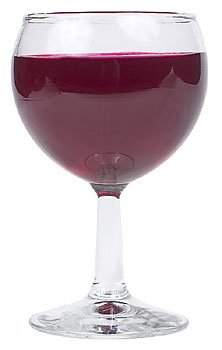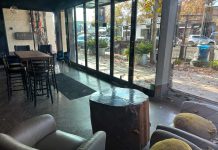When our wine dinner group gathers, conversation sometimes takes
a back seat, as was the case with our dinner last week based around
wines from the Loire Valley region of France.
When our wine dinner group gathers, conversation sometimes takes a back seat, as was the case with our dinner last week based around wines from the Loire Valley region of France.
As soon as we entered the room, the wonderful fragrance of wine and food overwhelmed our sense of cordiality. Few greetings were exchanged as everyone grabbed a plate, a glass and started to imbibe.
Scattered on the kitchen island, filling every inch of available space, were the following: fresh New England blue point oysters, raw on the half-shell, served with lemon wedges; sauteed Petrale sole; seared Ahi tuna; cured meats; Sonoma goat cheese; grilled asparagus, crusty bread and organic grape tomatoes with parsley and olive oil.
Five wines were scheduled to pair with the appetizers, the first being a 2005 Chateau de la Fessardiere Muscadet. This steely, crisp and dry white wine paid great complement to the oysters. Two fellows had never tried raw oysters, so I appreciated their courage as they squeezed a bit of citrus on the meat and threw back a couple of sliders! This wine had only 10 percent alcohol and cost $13.
The next wine was a 2005 Francois Chidaine Vouvray ($18). Vouvray, made with the chenin blanc grape, has some similar characteristics with Champagne. It can be dry, semi-dry or sweet. This wine was demi-sec, or semi-dry. This matched well with the sole, even bringing out some slight honey in the nose.
A rose was introduced next, a 2004 Charles Joguet Chinon Rose. This wine comes from the cabernet franc grape. The rose is created by limiting the amount of contact the fermenting juice has with the grape skins and seeds, showcasing a brilliant, salmon-colored wine. At $15, this light wine, with its smoky aromas, paired well with the grilled asparagus.
The cured meats went wonderfully with our first red wine, a 2004 Philippe Alliet Chinon. Again, Chinon is made with the cabernet franc grape, but this time, the traditional red color and flavor profile was created by letting the juice sit with the skins and seeds for a longer period of time.
This wine was dominated by a bitter cherry flavor. A bit green and vegetal, it allowed the salty and spicy components of the meat to counter the tartness of the wine.
The final wine with the appetizers was one I have enjoyed before, a 2005 Hippolyte Reverdy Sancerre ($19). Made with sauvignon blanc, the acidity and clean citrus is a perfect match with the soft goat cheese. Spread on crackers and nibbled with the tomatoes, this is a wine-food match made in heaven! This is the joy of experimenting with wine. In this case, the high acidity in the wine paired with the acidity of the tomatoes, yet did not overpower the creamy cheese.
We did not slow down, as the second course was on the stove! Our host was steaming mussels with white wine, Irish butter, herbs and diced onions.
The seafood, delicate and not fishy at all, was paired with a 2004 Bossard Muscadet. The wine had a nice mineral component with a hint of lemon and lime. The price per bottle was less than $16.
Another nice thing about wines coming out of the Loire Valley is the price. Most of the wines we tried were under $20.
For the third course, our host wanted to approach the food-and-wine pairings in an unconventional manner. A pork course, with white wines, would be followed by a course consisting of games hens, with red wine. “This diversity of flavors will allow us to understand the nuances of great Loire wines,” he stated.
Pork medallions were flash-seared in butter. The pan was deglazed with some white wine and garlic chives were added at the end for color and flavor. The sauce was then poured over the pork and served with French organic baby potatoes that had been steamed and tossed with fresh herbs and olive oil.
Two wines were served with this course, starting with a 2002 Philippe Foreau Vouvray sec. This was our second Vouvray of the night, and it definitely was different from the first. The wine was dry, with flavors of dried apricots and clove.
This was followed by a 1999 Chateau D’Epire Savennieres “Cuvee Especial” ($20). The wine, made with chenin blanc, tasted of pears and apples. The nose was unique, and as one observer stated “smelled like cognac.”
Our host felt compelled to open a third bottle with this course. We were out of clean glasses, and someone in the group was looking quite perplexed over this situation. “You have to empty one of your glasses,” advised another. Still perplexed, the confused one was given more advice, “That means you have to drink what’s left.”
A 2000 Chateau Yvonne Saumer Blanc was introduced. This wine was not as acidic, nor as minerally as the other wines. It was more austere, even a bit waxy on the finish. The cost was around $30.
Cheers!














